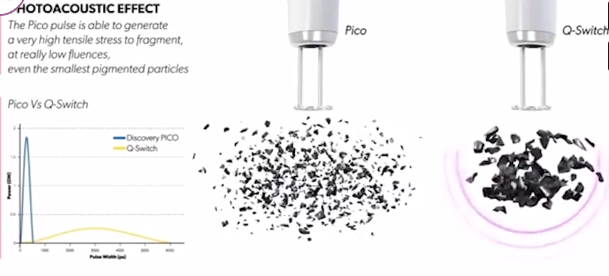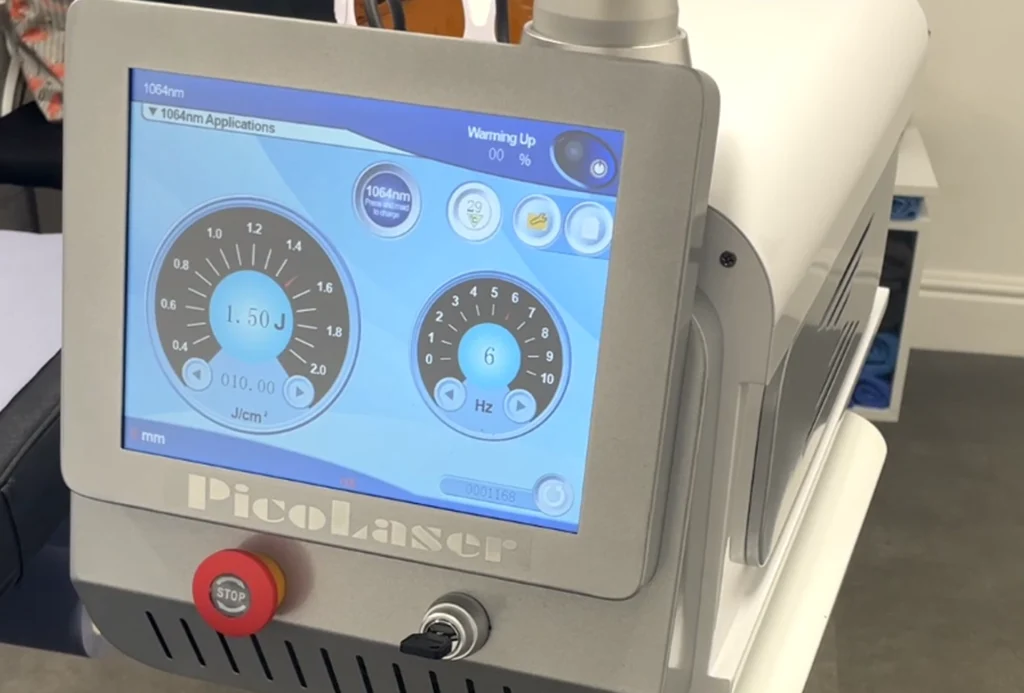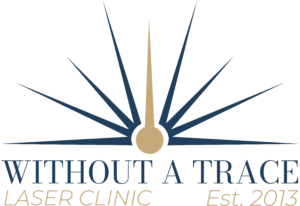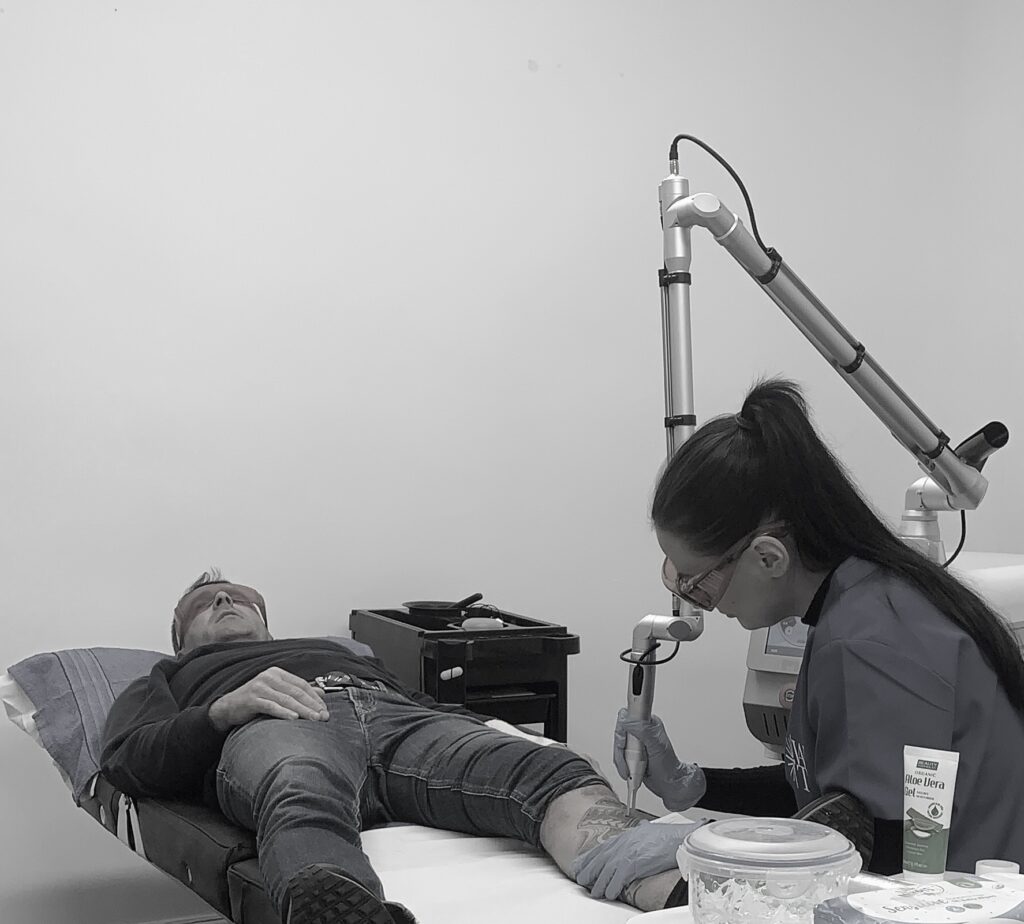Understanding the Science of Pico Laser Tattoo Removal
The Science Behind Pico Laser Tattoo Removal
Laser tattoo removal is a fascinating blend of science and skincare – and it’s come a long way in recent years. At Without a Trace Laser Clinic, we are proud to use cutting-edge Pico laser technology to safely and effectively remove unwanted tattoos. But what’s the science behind Pico laser tattoo removal and why is it so effective?
Tattoo ink sits deep within the layers of the skin and older laser systems often struggled to break it down completely. The science behind Pico laser tattoo removal lies in its use of ultra-short bursts of energy – delivered in picoseconds – to target ink with incredible precision. These rapid pulses cause the ink particles to shatter into minuscule fragments, which the body can then naturally eliminate over time.
What makes Pico laser technology stand out is its ability to treat a wide spectrum of ink colours and its compatibility with most skin types? Because it targets only the ink and not the surrounding skin, it offers a safer, faster and more comfortable tattoo removal experience with minimal downtime.
How Pico Laser Technology Works
The science behind Pico laser tattoo removal is rooted in a process called selective photothermolysis. This simply means the laser’s energy is absorbed by the tattoo ink, not the surrounding skin. The Pico laser delivers ultra-short pulses of energy, causing the ink pigments to rapidly break into tiny particles. These fragments are then gradually flushed away by your body’s immune system.
Why It Outperforms Q-Switched YAG
When it comes to removing unwanted ink, understanding the science behind Pico laser tattoo removal reveals why it’s considered the gold standard in modern treatment. Traditional Q-switched YAG lasers use nanosecond pulses (billionths of a second) to heat and break down ink particles, relying on photothermal energy. While effective, this method can be limited by discomfort, longer recovery times and slower ink clearance—especially with stubborn colours or older tattoos.
In contrast, Pico laser technology uses ultra-short picosecond pulses (trillionths of a second) and photoacoustic energy, which delivers pressure rather than heat to shatter the ink into much finer particles. These smaller fragments are easier for the body to naturally flush out, leading to faster results, fewer sessions and less trauma to the skin. The reduced heat also means there’s a lower risk of scarring, making Pico far more suitable for all skin types and sensitive areas.
While Q-switched YAG lasers helped shape the tattoo removal industry, Pico laser systems represent a significant leap forward—especially for clients seeking safer, faster and more effective outcomes.


The Tattoo Removal Process with Pico Laser
Treatment Sessions
During each session, the Pico laser emits bursts of energy that penetrate the skin and break down the ink particles. Depending on the size, colour and depth of the tattoo, clients may need 6 to 12 sessions for complete removal. Each session is spaced 8 weeks apart to allow the skin to heal and the body to flush out the broken-down particles.
Post-Treatment Care
After treatment, clients may experience mild redness or swelling. These are normal side effects and typically subside within a few days. It’s important to avoid sun exposure and follow aftercare instructions to ensure proper healing and optimal results.
Conclusion
The Pico laser is a revolutionary tool in tattoo removal, offering faster, safer and more effective treatments compared to traditional lasers. Whether you want to fade your tattoo for a cover-up or remove it completely, Without a Trace Laser Clinic provides expert care with advanced Pico laser technology to ensure optimal results.
Book Your Free Consultation Today
Interested in removing your unwanted tattoo? Contact Without a Trace Laser Clinic for a Free Consultation and learn how our Pico laser technology can help you achieve clear, ink-free skin.

